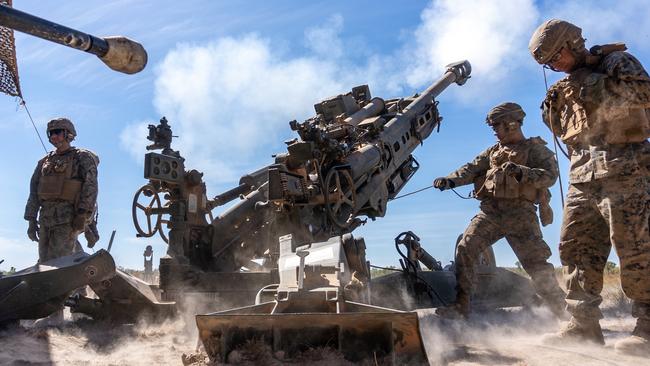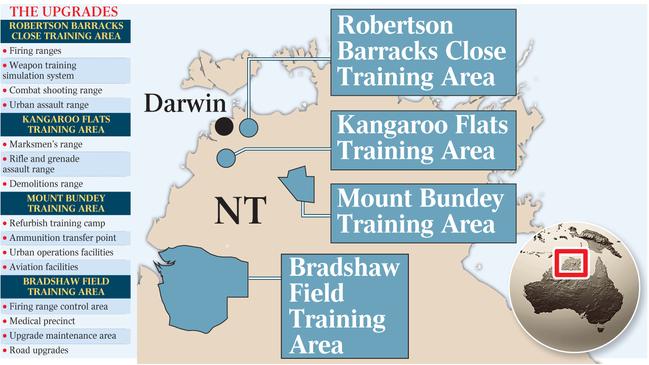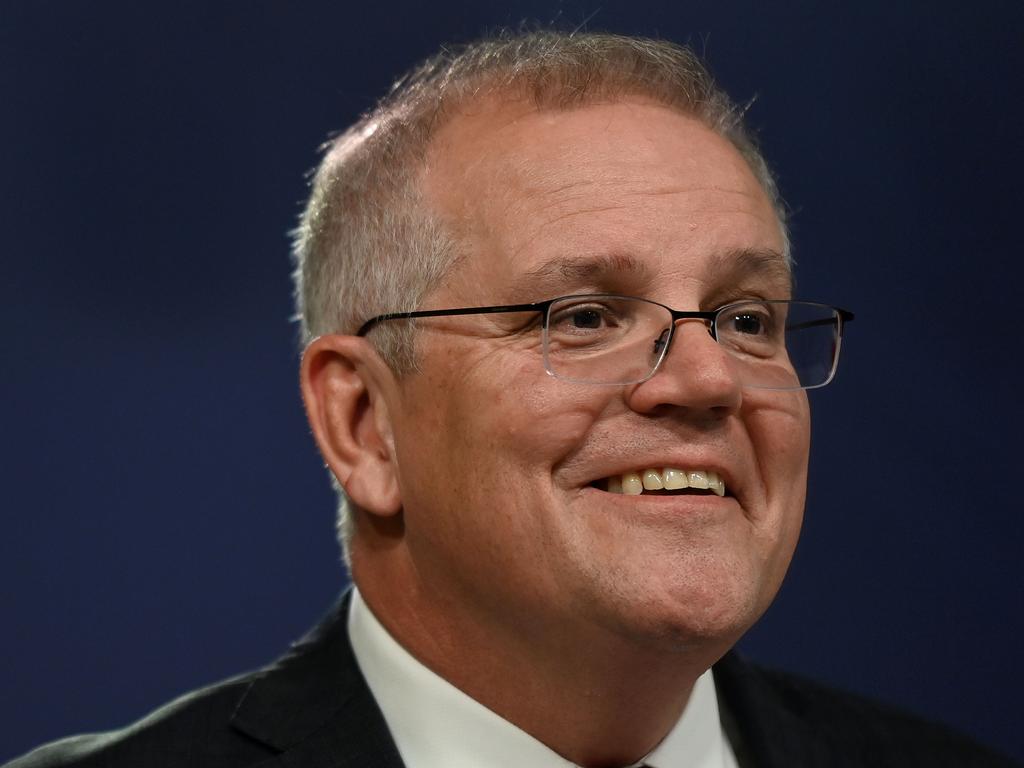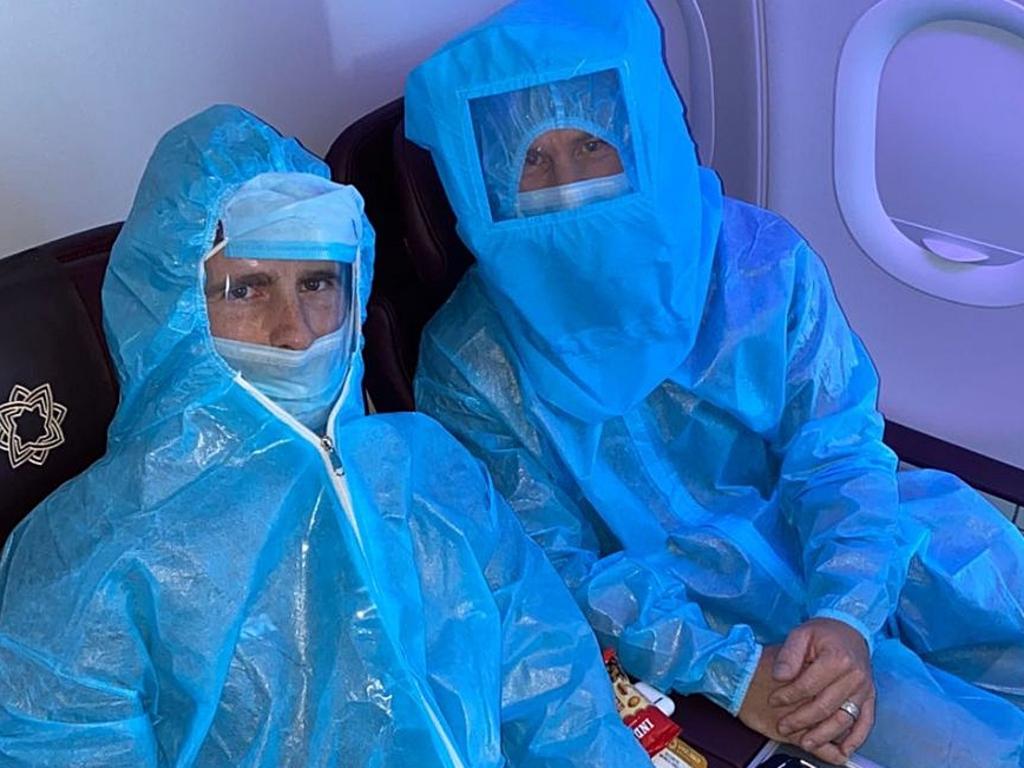Let war games begin: ADF bases upgraded
Scott Morrison has ordered sweeping upgrades of military training bases aimed at expanding ‘war gaming’ with the US.

Scott Morrison has ordered sweeping upgrades of military training bases in Northern Australia to enhance land combat capability and support simulated exercises in a major strategic step-up aimed at expanding “war gaming” with the US and defending the Indo-Pacific.
The Prime Minister will announce a $747m defence package in the Northern Territory on Wednesday after Home Affairs Department secretary Michael Pezzullo warned the “drums of war are beating” and that Australia must be prepared “to send off, yet again, our warriors to fight”.
The upgrades of four training bases include an overhaul of weapons firing ranges, lengthening the Northern Territory’s Bradshaw Field Training Area airstrip to support heavier aircraft and new training facilities for Australian Defence Force personnel and US marines.
“Working with the United States, our allies and Indo-Pacific neighbours, we will continue to advance Australia’s interests by investing in the Australian Defence Force, particularly across Northern Australia,” Mr Morrison said. “Our focus is on pursuing peace, stability and a free and open Indo-Pacific, with a world order that favours freedom.”
Mr Morrison said the investment, part of a $270bn spend across the nation to ensure the ADF can respond to emerging challenges, would also maximise local jobs through a “targeted industry plan to contract local businesses throughout the entire supply chain”.
“My commitment is keeping Australians safe and keeping Australians in a job,” he said.
Defence Minister Peter Dutton said the funding boost would ensure the ADF’s land combat capability was “equipped with the technology it will require to maintain our competitive advantage”.

Defence strategists on Tuesday urged the government to increase investment in military capabilities to counter the growing threat of China following Mr Pezzullo’s Anzac Day message to staff, which warned of rising strategic uncertainty and growing militarisation.
The Lowy Institute’s Sam Roggeveen said Mr Pezzullo’s message was “not pessimistic enough”, arguing Australia could not rely with certainty on the US coming to its aid in a conflict.
Mr Roggeveen said Australia needed a bigger, more capable ADF which would make the 2 per cent of GDP benchmark for Defence spending “look more like a floor than a ceiling”. He said Australia would continue to rely on the extended deterrence of the “US nuclear umbrella”. But in conflicts short of nuclear war, “we need to be more prepared to look after ourselves”.
Yet the US military is bolstering its presence in the Top End, with marines arriving in Darwin in groups of between 200 and 500 since February ahead of joint exercises with the ADF. By June about 2200 US troops are expected to be in the NT for operation Talisman Sabre, which will involve a range of training activities including humanitarian assistance, security operations and high-end live-fire exercises.
WA Premier Mark McGowan took issue with Mr Pezzullo’s comments and urged the Morrison government to “tone it down”. “What good does that do, saying things like that? It’s totally unnecessary, it gets you a headline, no doubt, probably secures you some coverage around the world. And, you know, there may be elements in the community who cheer,” Mr McGowan said.
“But it is in no one’s interests, that sort of language. Diplomacy should be conducted diplomatically, by people in elected office, and also by those who are public servants.”
Mr Morrison also downplayed the comments, saying that Australia’s objective was “to pursue peace” for a free and open Indo-Pacific.
The training areas slated for upgrades are the Robertson Barracks Close Training Area; Kangaroo Flats Training Area; Mount Bundey Training Area and Bradshaw Field Training Area. The upgrades will support a more effective simulation of conflict to help maintain a world-class military, support greater engagement and combined training with the US under the Force Posture Agreement.
The 2020 Force Structure Plan prioritised training and simulation as critical in preparing Defence for present and future missions, and boosting investment in technology to maintain its competitive edge.
The US Force Posture Initiatives are considered by the government as a “fundamental pillar” of the ANZUS alliance, supporting shared security and stability interests in the Indo-Pacific region.
Australian Strategic Policy Institute analyst Marcus Hellyer said the Morrison government was sending a message to the Australian people to harden their resolve, and to Beijing that “we’re off the fence”.
He noted the ADF still didn’t have a single armed drone in its arsenal, while Azerbaijan, with 3 per cent of Australia’s GDP, had mastered unmanned precision strike capabilities in its recent conflict with Armenia, using off-the-shelf Israeli drones.
“Defence needs to get much more serious about what capabilities we can acquire quickly,” Dr Hellyer said. “If there is a war with China, it will be nasty.
“The US would expect a far more substantial contribution in any war with China over Taiwan. And if the war were to extend beyond the Taiwan Strait, China has ways of applying military force at much greater range.”
ANU professor of international security John Blaxland on Tuesday said Australia was “underprepared for what the future may hold”, with last year’s Defence Strategic Update already “looking relatively limp”.
“We have a boutique defence force structured for the unipolar moment of the post-cold war years where the US did the heavy lifting and all we had to do was provide some niche contributions on occasion,” he said. “Those days, if they are not gone, are quickly passing.”
He said China’s “gobsmacking” acceleration in military capabilities, and “Wolf Warrior” rhetoric signalled a dramatic elevation in the threat faced by Australia. On the weekend, Mr Dutton warned that the prospect of a war with China over Taiwan could not be discounted.
China’s Foreign Ministry spokesman Wang Wenbin on Monday responded to the comment, cautioning Australia to “fully recognise that the Taiwan question is highly sensitive”.
“(It should) abide by the one-China principle, be prudent in its words and deeds, avoid send any wrong signals to the ‘Taiwan independence’ separatist forces, and act in ways beneficial to peace and stability in the Taiwan Strait and conducive to China-Australian relations,” Mr Wang said.
Opportunities for local businesses on the defence upgrade sites announced on Wednesday will be maximised with a target set for at least 10 per cent of the local workforce to be indigenous Australians. In addition, 6.5 per cent of the value of the supply chain is to subcontracted to indigenous enterprises.
Additional reporting: Paul Garvey







To join the conversation, please log in. Don't have an account? Register
Join the conversation, you are commenting as Logout